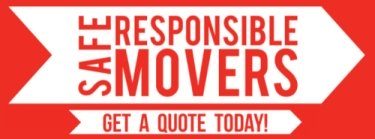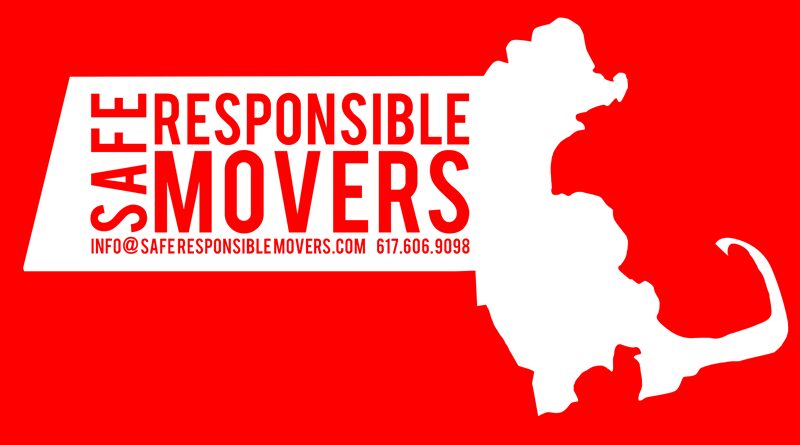Boston Moving Permits
Boston Moving Permits and Tow Zone Signs Made Simple
Getting a Boston Moving Permit is one of the most important steps for a smooth move in the city. Boston traffic keeps getting tighter, parking is limited, and the odds of finding an open spot for a moving truck are slim. Safe Responsible Movers is a top rated Boston moving company that has handled thousands of Boston moves, and moving permits are one of the biggest factors in keeping a job on schedule. The truth is that some neighborhoods give you a little breathing room, but most do not. If your move involves places like the South End, Back Bay, Charlestown, Jamaica Plain, or the North End, securing a legal Tow Zone and posting the tow zone signs ahead of time is the only reliable way to make sure your moving truck can park safely and legally.
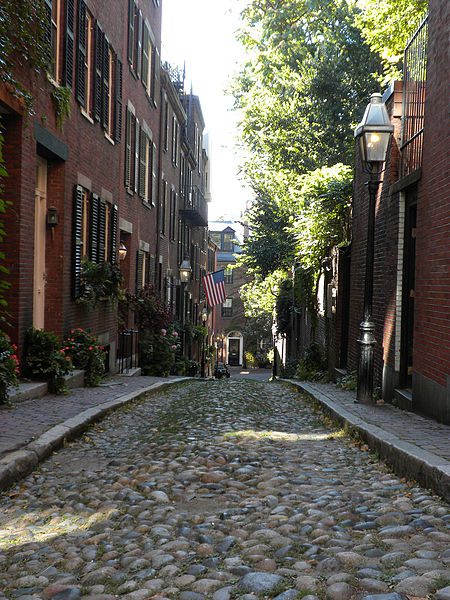
Boston Moving Permits are necessary on Acorn Street, one Boston’s most celebrated and visited treasures. (The street is not known for accommodating moving trucks.) Photo by Directory of Boston from USA [CC BY 2.0], via Wikimedia Commons
Double parking in most of Boston’s neighborhoods is dangerous, especially if an emergency vehicle is called while you’re upstairs unpacking a box. It can also get you a hefty ticker. And it makes driving on the streets here more difficult than it already is – and for most of Boston, it already is quite difficult to park a moving truck. It doesn’t matter if you’re loading your own truck or hiring movers– you’re going to want to make sure that whoever is carrying your precious belongings has a short walk to the back of the truck. An extra ten feet to get around your neighbor’s car may not sound like much ground to cover. But multiply that ten feet by the number of boxes and pieces of furniture you have. That’s a whole lot of unnecessary labor time and costs, wasted energy, and an increased chance of an injury or a damaged item.
So you definitely want your moving truck parked as close as possible to the door through which you’ll be carrying most of your stuff. And luckily, the city offers Boston Moving Permits to reserve a parking spot for moving day.
So here they are, just as the title promised, the 5 easy steps to follow get Boston Moving Permits:
Getting Boston Moving Permits at Boston City Hall
If you want to get moving permits as quickly as possible, you’ll need to make a trip to City Hall (you can simply apply online if you meet certain criteria, which we’ll explain below, but then you’ll have to wait for the signs to arrive in the mail). Before you go, here’s what you’ll need (so you only have to make one trip):
-Meters: Ideally, you should know whether you’ll need to block off parking meters for your move. (And, if so, you should know how many — though this would almost always be two for a single truck.) However, if you’re unsure, the clerk behind the counter will generally know or be able to run a quick check on Google Maps.
-Money: The City of Boston accepts Visa, MasterCard, cash, or personal checks for in-person payments for Boston Moving Permits. For one spot for a single moving truck, you should expect to spend about $69 total for the permits. If you’re blocking off meters, add an extra $20 per meter head to that total.
-Time: You cannot wait until the last minute to get your moving permits. To reserve a spot for a truck in a residential area, you have to obtain your permits AT LEAST 3 DAYS prior to your move. For example, if you’re moving on a Sunday, you have to get the permits by the previous Thursday. If you live in a metered area, you need to obtain your permits AT LEAST 2 DAYS prior to your move. It’s also important to bring your patience — sometimes the process will only take ten minutes out of your day, while other times it could take more than a few hours. You never know what kinds of things City Hall might have to deal with while you’re waiting to get your permits. So it’s best to block out a chunk of the day.
-Exceptions: Think the rules don’t apply to you? Well, if you live on a state-owned road, they may not.
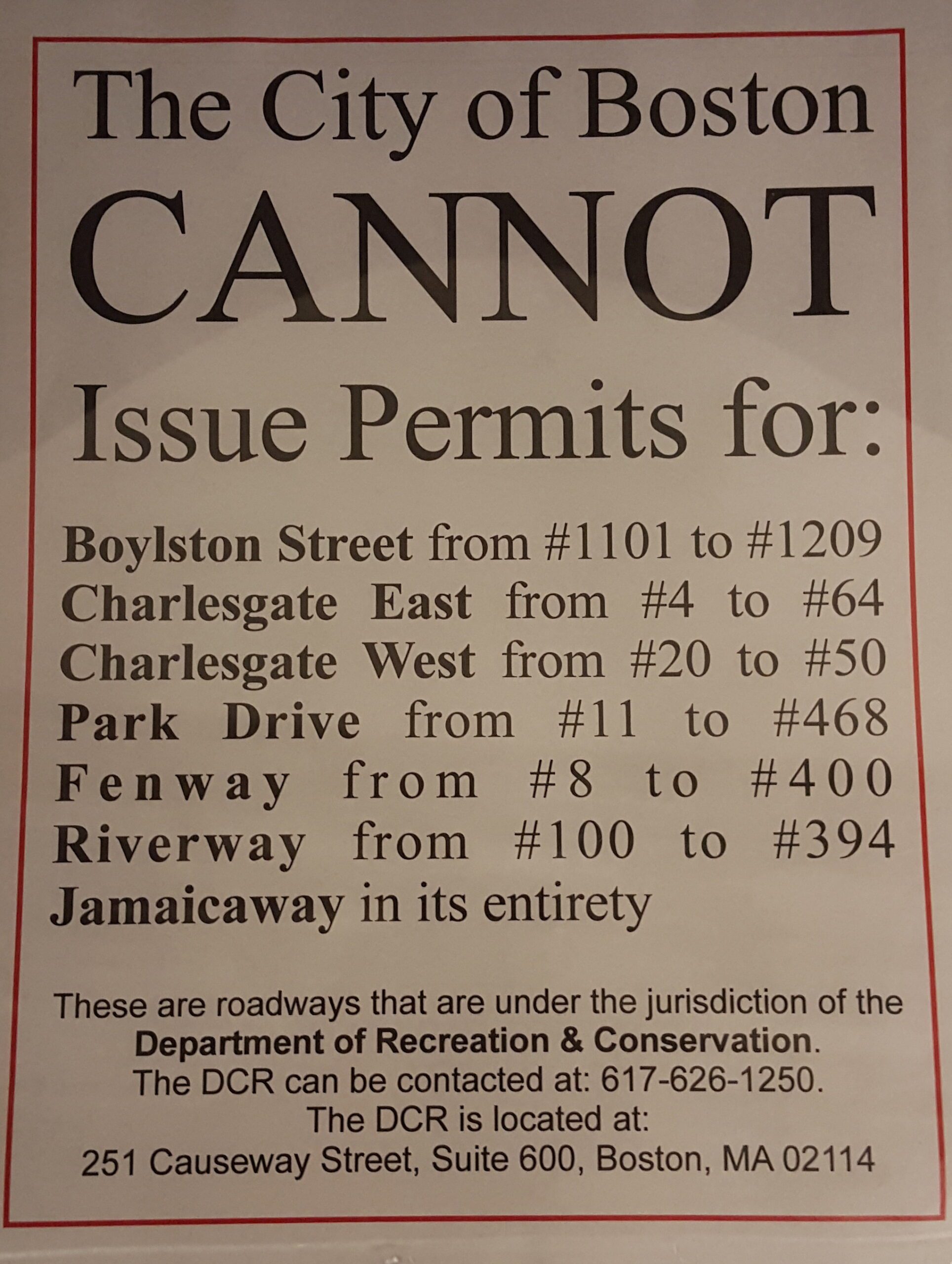
To reserve parking on state-owned roads (listed above), you need to contact the Massachusetts DCR.
Additionally, if you live on a state-owned road (parts of Boylston St., Charlesgate East and West, Park Drive, Fenway, and Riverway, and all of Jamaicaway), you’re under the jurisdiction of the Massachusetts Department of Recreation & Conservation, and not the City of Boston. Boston Moving Permits will not apply to your address. So you’ll need to apply directly to the DCR for your moving permit.
Step 2: Get the Boston Moving Permits!
There are two ways to get Boston moving permits. The easiest way, of course, is to apply online and have the permits mailed directly to you. However, you can only apply online if you meet ALL of the following criteria:
- You’re only looking for a single-day (7:00 A.M. to 5:00 P.M.) moving permit, for the standard size of two parking spaces or forty feet. (If you would like your permits to instead by valid from 12:00 p.m. to 8:00 p.m., that’s an option — but you’ll have to make that request in person.)
- You’re planning your move for AT LEAST two weeks after the date you apply, and NO MORE than a month after the date you apply. In other words, you can apply online if your move is between fourteen and twenty-eight days away.
- You (or someone else) will be able to post the signs AT LEAST two days (48 hours) before your move. So if your move is at 9:00 A.M. on the 17th, the signs should be up before 9:00 A.M. on the 15th.
- You’re going to post the signs in a valid spot. Bus stops, handicapped spaces, and other “no parking” zones aren’t valid. Boston Moving Permits are invalid in those spots.
- You’re not moving to or from the the North End anytime in June, July, or August. If that’s the case, you need to call Patricia Papa, Special Events Liaison, at 617-828-2509 to find a space that won’t interfere with any feasts, parades, or other special events.
If you can’t get the permits online, or would just rather to get the process done all in one day, you’ll need to head downtown and get your Boston Moving Permits in person.
When you get to City Hall, just like everyone else, you’ll need to walk through the metal detectors and put your keys, wallet, and phone on the conveyor belt. Luckily, this safety precaution only takes a minute. You should never see any TSA-like lines on your way into City Hall.
Once inside, you’ll see a coffee stand to your right. If you need a little boost, go ahead and buy a cup — the coffee is honestly much better than you’d expect from a municipal building. Walk past the coffee shop and head down the escalator to the mezzanine. Take another escalator down to the second floor. There, you’ll find a maze of windows — city assessor, elderly commission, birth certificates, and more.
The moving windows are on the opposite end of where the escalator drops off, so you’ll want to take a left and find windows 2-6. Any of them with a light on (like a grocery store check-out) will be open for business. If there are more people than windows available, just get in line and approach the appropriate window when called.
The signs are $4.00 each, and then there is a $61.00 base fee for the 40-foot area needed to reserve for the truck. This total of $69.00 is all most box trucks require – the 40-foot area, and two signs to post in the area. If you are reserving a spot in front of meters, you will have to pay an additional $20.00 per meter head within the 40-foot spot. (If your move is on a Sunday, the meter fees will be waived. For evening moves, when the meters may be off, just ask.)
You’ll also get a helpful flyer to distribute on cars and to your neighbors in advance of the move, so they are aware of the parking situation.
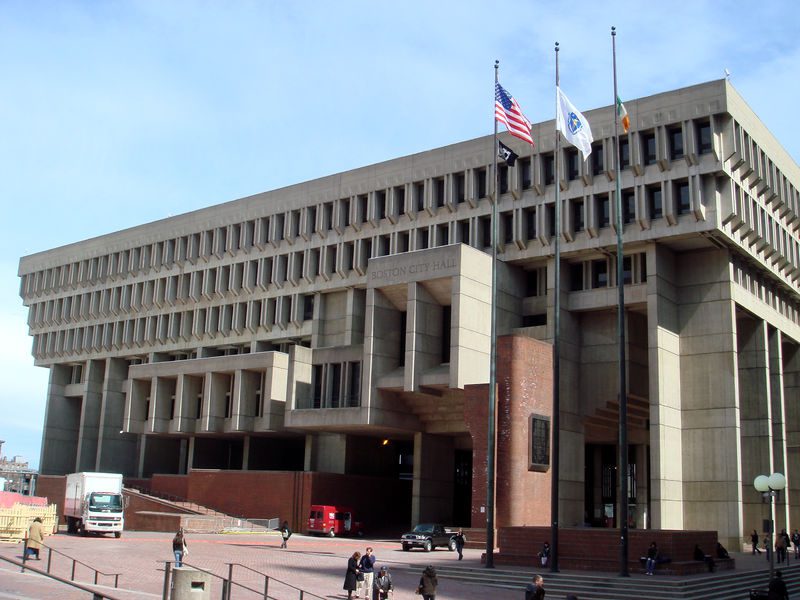
Boston City Hall, known for its unique design, is the place to get moving permits for the city of Boston. Photo by Bobak Ha’Eri (Own work) [CC BY 3.0], via Wikimedia Commons
Step 3: Post the Boston Moving Permits!
You need to post Boston Moving Permits and “No Parking” signs AT LEAST 48 HOURS (at least 24 hours in a metered area) in advance of the move, within the 40-foot reserved area. You can post them on utility poles, parking meters, trees, or even fences. If you think your two signs are not visible enough, you can make additional “no parking” signs out of cardboard. As long as your homemade signs have the date of the permit, you can post them within the reserved area for extra coverage. (And definitely make sure to use plenty of tape to securely post your signs and permits. It’s important that neither rain, wind, nor neighbors can interfere with your paid-for right to park on moving day.)
Remember the flyer you got from the PWD? You’ll need to make copies of it, and leave it on the windshields of the cars parked in your moving spot. You’ll need to post it on the doors of the buildings on either side of the street. The city wants you to post these flyers, once a day, for at least the two days preceding your move. You can post them anywhere and on any car within a 20-foot radius of your moving spot.
We recommend posting them more often and in a larger area. Remember – it is important that everyone in the neighborhood knows that that parking spot is yours and yours alone. It’s always best to have your neighbors avoid parking there on that date. You don’t want to call a tow truck and have their car removed. Just because you’re moving out is no reason to make enemies. (And definitely not if you’re moving in — first impressions are important!)
This is why we recommend posting your permits and flyers well in advance of the 48 hour cut-off — especially if you live in a residential area, where people often leave their cars in the same spot for days at a time.
Step 4: Moving Day!
If you’ve hired movers, you’ll need to check your reserved parking area a couple of hours before their scheduled arrival. If a vehicle is parked in the area, you can call the Boston Police Department’s non-emergency line at 617-343-4911. Make sure to say, “this is not an emergency,” when they pick up. Calmly explain the situation (that there’s a car parked in the space you paid for), and give them the offending car’s license plate number. The police will run the registration and try to contact the owner. This way, the owner can hopefully remove the car instead of getting towed. If the owner is unreachable, they’ll call the towing company.
Getting the police to come and finally decide to call a tow truck can take two hours or more (remember, you did say that it was not an emergency.) And if you have movers waiting, you’re still going to need to pay for their time. So plan to be up early on moving day.
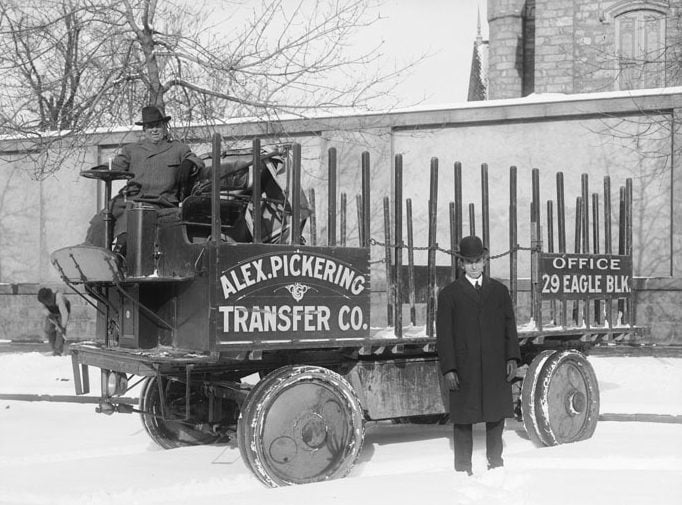
Once your truck is unloaded and your move is finished, it’s time to clean up your permits. By Harry Shipler [Public domain], via Wikimedia Commons
Step 5: Clean Up!
Once you or your movers have fully loaded (or unloaded) your truck, you’ll need to clean up. You’ll need to take down all the signs and the tape used to post them. You should also pick up all the flyers you posted. You must report any damage to city property to the Public Works Department. If you moved any traffic signs, cones, or any other city property, you’ll need to put it back where it was. And that’s it. That’s how Boston Moving Permits work.
Does this process sound like too much of hassle? Some Boston moving companies, like us, for example, will take care of all aspects of permit acquisition. Our fee is $99 if you need one permit, $150 if you need two, and $199 for three or more. This is in addition to the cost of the permits themselves. That fee covers acquiring the permits, posting the permits, and removing them. This fee does not cover calling the police to remove cars, or posting flyers around the neighborhood everyday. (If you want us to acquire your moving permits, we need at least one week of advance notice.)
Not satisfied with this information?
For questions about traffic approval, scheduling, parking meters, or signage, contact the Boston Transportation Department at 617-635-4675 or 617-635-4680.
For questions about fees and moving permits, contact Boston Public Works Department at 617-635-4909 or 617-635-4910.
Apply Online for Boston Moving Permits here.
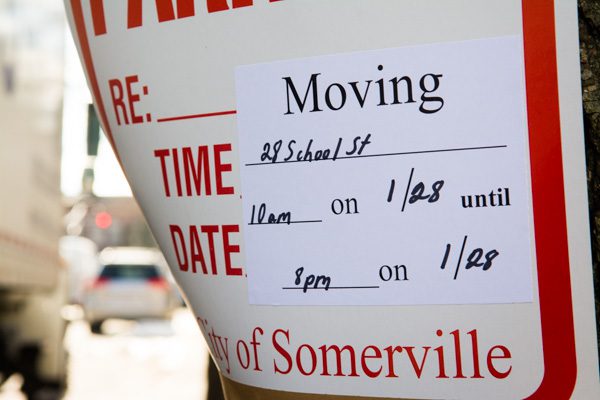
Moving Permits
As expert movers in Boston, Brookline, and Somerville, we offer permit acquisition services in Boston, Brookline, and Somerville.
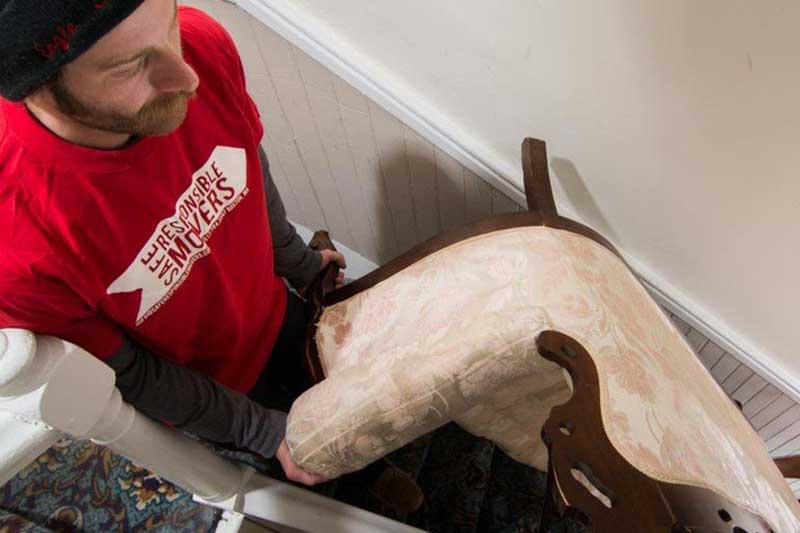
Moving Services
We focus on the services people actually need. Whether you need household movers, apartment movers, Peloton movers, labor only movers, or movers to load a truck, our team brings real skill and reliability to every job.

Commercial Moves
Our team of commercial movers in Boston has the experience needed to make your Massachusetts office move run smoothly.

Have Moving Questions?
We have answers! Visit our FAQs page for answers to some of our most commonly asked questions.

Moving Resources
Some of our favorite places to get packing supplies, donation centers, and more. Tips from the best movers in Boston!
